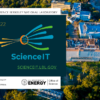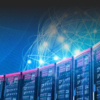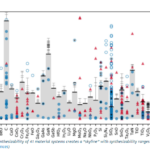By Arica Chhay, Gary Jung, Ian Vaino Contents Energy Efficient Data Centers IT Tips to Reuse and ReduceSave a Tree and Go PaperlessCommitted to a Greener Future Berkeley Lab celebrates Earth Month annually throughout April. In support of the Lab’s sustainability initiatives, this … [Read more...] about IT Sustainability Practices
ScienceIT News
Savings on IT Services
By Arica Chhay, Jeff D'Ambrogia, Richard Gregory Enterprise ChallengesCollaboration ServicesScientific Computing ServicesTelecommunications ServicesWhat’s Coming Next Berkeley Lab is one of three national laboratories governed by both the U.S. Department of Energy (DOE) and the Regents of … [Read more...] about Savings on IT Services
ScienceIT Brochure 2022
THE SCIENCEIT PROGRAM WAS ESTABLISHED TO HELP SCIENTISTS FIND SOLUTIONS TO COMPUTING BARRIERS SO THEY CAN MOVE FORWARD IN THEIR RESEARCH. Berkeley Lab takes a science-centric approach to managing its Information Technology resources, recognizing that IT is intertwined with our scientific and … [Read more...] about ScienceIT Brochure 2022
High-Performance Computing – on the Lawrencium Cluster at LBNL
Authors: Wei Feinstein, Shawfeng Dong, Gary Jung For almost 20 years, the IT Division’s Scientific Computing Group at Berkeley Lab, also known as HPCS (High-Performance Computing Services), has stood out as a national leader and pioneer in high-performance computing — essentially defining the … [Read more...] about High-Performance Computing – on the Lawrencium Cluster at LBNL
Autofocus for X-ray Crystallography: How AutoML Targets Samples at the ALS
Authors: Fengchen Liu, Jordan Jung, Shawfeng Dong, Tin Ho Published on February 10, 2022. Automated Machine Learning (AutoML) frameworks aim to automate tasks so non-experts can take advantage of machine learning on a large scale. There are a vast amount of these frameworks on the … [Read more...] about Autofocus for X-ray Crystallography: How AutoML Targets Samples at the ALS
Cloud Computing for Science at LBL
(Cloudy with a Chance of Science) Authors: Jeff D’Ambrogia, Fengchen Liu, Tin Ho, Shawfeng Dong, Gary Jung Published on January 7, 2022. Credit: Starecat.com In some respects, cloud computing has been around for so long that it seems old hat these days. Gone are the early days at … [Read more...] about Cloud Computing for Science at LBL
Using computation to uncover how Arctic soil microbes respond to the changing climate
By Erica Yee • Published April 15, 2021 Look up on a clear night and you might see quite a few of our galaxy’s 100 billion stars. Look down, however, and you’ll be hard pressed to see any of the 10 trillion cells in a single gram of soil. “Soil has amazing amounts of … [Read more...] about Using computation to uncover how Arctic soil microbes respond to the changing climate
Computing as a laboratory: How Molecular Foundry scientists model at the nanoscale
By Erica Yee • January 29, 2019 The Science IT Profiles series highlights how the Scientific Computing Group supports the work of Berkeley Lab researchers spanning various disciplines. In six of the seven facilities of the Molecular Foundry, scientists at benches or instruments, in lab … [Read more...] about Computing as a laboratory: How Molecular Foundry scientists model at the nanoscale
How the Materials Project connects computational and experimental materials science
By Erica Yee • August 2, 2018 The Science IT Profiles series highlights how the Scientific Computing Group supports the work of Berkeley Lab researchers spanning various disciplines. To invent the first commercially viable electric light bulb, Thomas Edison and his assistants tested … [Read more...] about How the Materials Project connects computational and experimental materials science
Laboratory Computing: How Molecular Foundry Scientists Model at the Nanoscale
By Gary M Jung on 2019-02-05T17:36:08Z In six of the seven facilities of the Molecular Foundry, scientists at benches or instruments, in lab coats or clean room suits, are hard at work creating and characterizing nanoscale materials. Sandwiched in between those laboratories, however, is a … [Read more...] about Laboratory Computing: How Molecular Foundry Scientists Model at the Nanoscale
Was this page useful?










